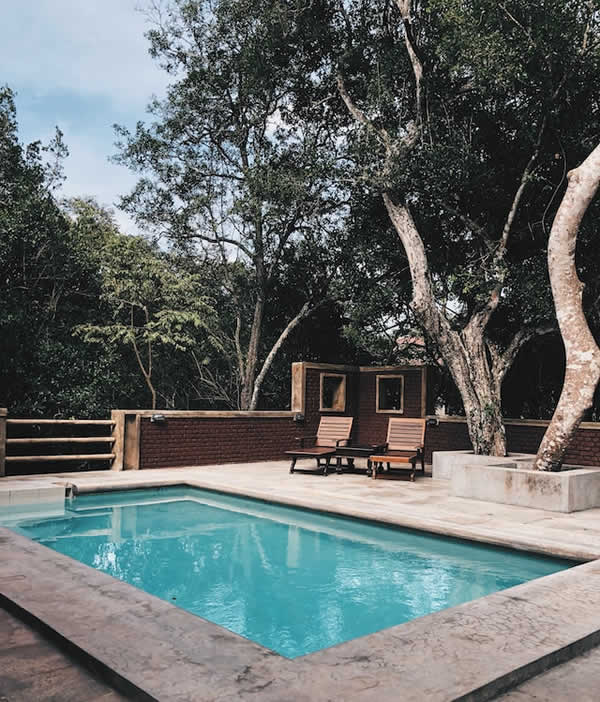Installing a pool in your backyard is not just a home improvement project; it's an investment in leisure, health, and family time.

But before you dive into the deep end of pool ownership, there's a lot to consider, from the preliminary planning phase to selecting the right pool parts.
Preliminary Planning and Budgeting
The initial planning phase sets the foundation for your entire pool project. During this stage, it's crucial to determine how much you are willing to invest and what purpose your pool will serve.
These core considerations act as your North Star, guiding all your decisions from the pool's size and design to the type of pool parts you'll need.
Understanding your primary motivators will ensure that your investment yields the maximum return in terms of enjoyment and functionality in your new outdoor space.
Determine the Purpose
Before proceeding further, it's essential to identify the primary purpose of your pool, as this will significantly impact your design choices, size, and required features.
Family Fun
- Shallow Area: A designated shallow area allows young children to splash around safely.
- Slide or Diving Board: These add-ons enhance the fun factor but need to be installed in compliance with safety regulations.
Exercise
- Length: For swimming laps, a pool needs to be at least 25 meters in length.
- Lane Lines: Adding these can help swimmers maintain a straight path, enhancing the workout experience.
Entertainment
- Size: Consider a larger pool with various depth levels for different activities and group sizes.
- Outdoor Kitchen or Bar: Integrating an outdoor kitchen or bar area can elevate your social gatherings.
Set a Budget
Creating a budget not only involves calculating the upfront costs but also taking into account long-term expenses such as maintenance and potential upgrades.
Basic Pools
- Cost Range: $20,000 to $30,000
- Inclusions: This typically covers the pool shell, basic filtration system, and standard safety features.
Mid-Range Pools
- Cost Range: $30,000 to $50,000
- Extras: Includes additional features like enhanced lighting, landscaping, and possibly a heating system.
Luxury Pools
- Cost Range: Over $50,000
- Custom Features: You can add custom designs, waterfalls, and built-in spas, dramatically increasing the overall cost.
Choosing the Right Type and Design
Now that you have a clearer idea of your needs and budget, the next step is to choose the appropriate type of pool and its design.
This stage is also crucial for considering pool parts, which can vary significantly depending on the type of pool you choose.
Each type has its own merits and drawbacks in terms of cost, durability, and maintenance.
Pool Types
Understanding the pros and cons of each type of pool material can help you make an informed decision.
Concrete Pools
- Durability: Extremely durable and can last for decades.
- Maintenance: Regular upkeep is needed, including frequent cleaning and possible resurfacing after some years.
Vinyl Liner Pools
- Cost-Effectiveness: Generally less expensive upfront.
- Replacement: The liner will need replacement every 5-9 years, adding to long-term costs.
Fiberglass Pools
- Low Maintenance: Requires less ongoing care, saving both time and money.
- Limited Options: Available in fewer shapes and sizes, potentially limiting your design choices.
Pool Designs
Whether you’re leaning towards a traditional geometric shape or something more avant-garde, your design options are plentiful.
Rectangular Pools
- Best For: Ideal for lap swimming and adheres to a more classical aesthetic.
- Additional Features: Can easily incorporate an automated pool cover.
Kidney-Shaped Pools
- Advantages: Offers a more natural look and allows for versatile landscaping options.
- Fencing: The irregular shape may require custom fencing, potentially increasing costs.
Custom Design Pools
- Flexibility: Ideal for yards with unconventional shapes or for homeowners with specific aesthetic goals.
- Cost: Custom designs generally come at a premium due to the specialized construction required.
By taking the time to carefully consider the purpose of your pool, set a realistic budget, and explore different types and designs, you set the stage for a successful pool installation project.
This preliminary planning is essential for ensuring your investment provides the enjoyment and functionality you desire.
Legal Considerations and Permits
Before any construction begins, it's crucial to understand the legal requirements involved in pool installation.
Local Building Codes
Each locality has building codes that dictate aspects like pool depth, fencing, and proximity to the house. Make sure you are compliant to avoid any legal issues later.
Permits and Inspections
Almost all regions will require a building permit for pool installation.
- Pre-Construction Permit: Usually required before you break ground.
- Post-Construction Inspection: Ensures that the pool meets all safety and zoning regulations.
Selecting Pool Parts and Accessories
Choosing the right pool parts is essential for the functionality and longevity of your pool. These include pumps, filters, and ladders among other components.
Pool Pump
The pump circulates water in your pool and is essential for filtration.
- Single-Speed Pump: Cheaper but less efficient.
- Variable-Speed Pump: More expensive initially but saves money on energy bills in the long run.
Pool Filters
A good filter is essential for keeping your pool water clean.
- Sand Filters: Economical but less effective for small particles.
- Cartridge Filters: More efficient but need more frequent cleaning.
Additional Accessories
A good filter is essential for keeping your pool water clean.
- Ladders and Steps: Ensure they are slip-resistant and durable.
- Heaters: Extend your swimming season with a pool heater.
- Lights: For nighttime swimming, opt for LED lights for better energy efficiency.
Final Remarks
Installing a pool is a complex project that involves multiple steps, from setting a budget to picking the right pool parts.
By taking the time to plan thoroughly, you can ensure that the pool you install not only meets your needs but also provides long-lasting value.
Always consult with professionals at every stage and stay informed about local building codes and permits. With the right approach, your dream of owning a pool can become a refreshing reality.
